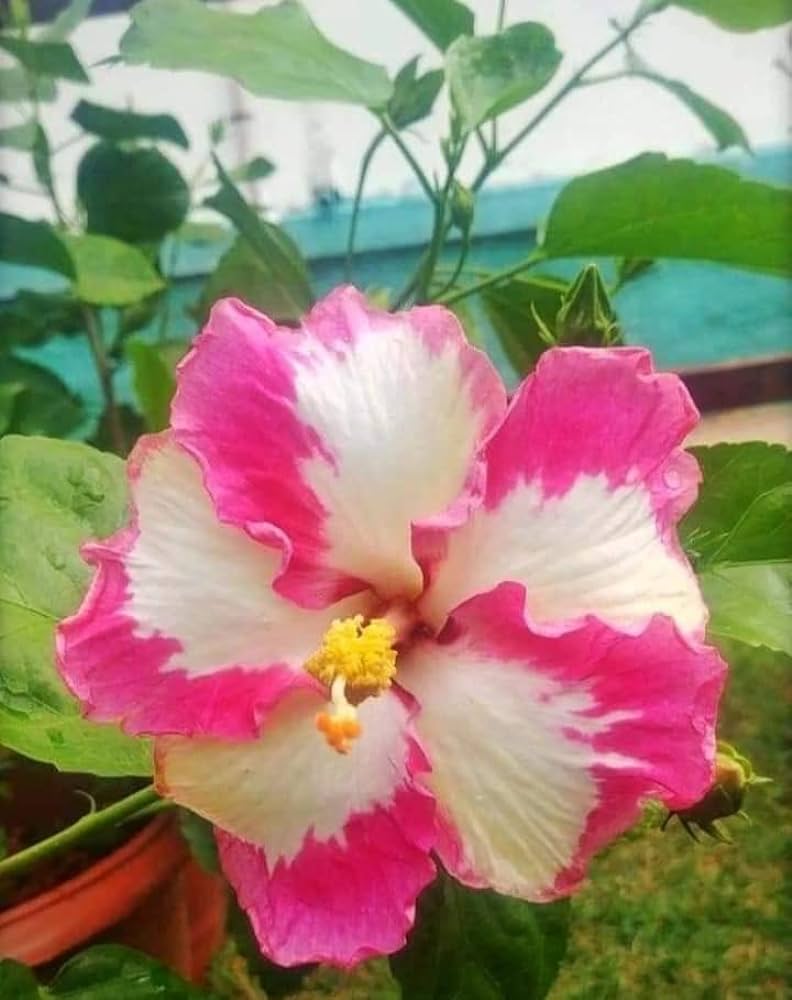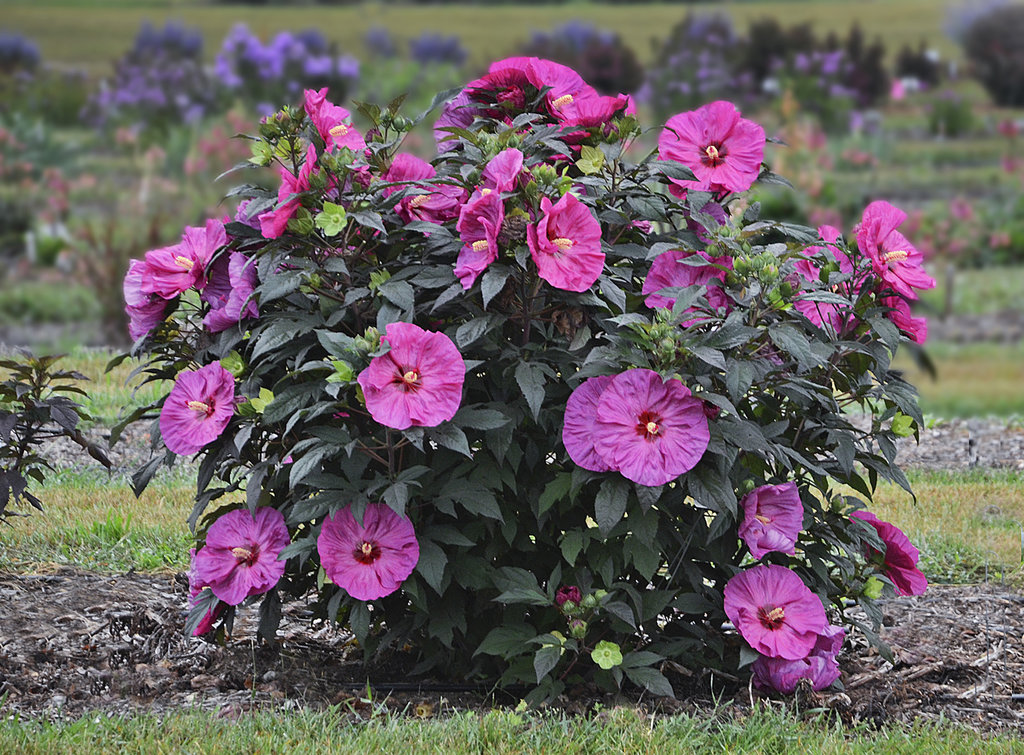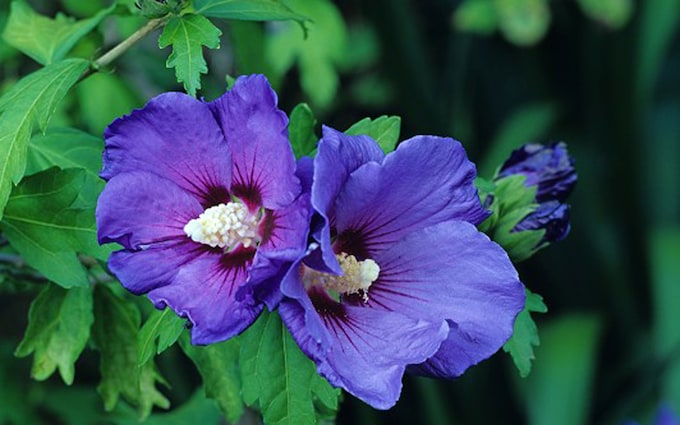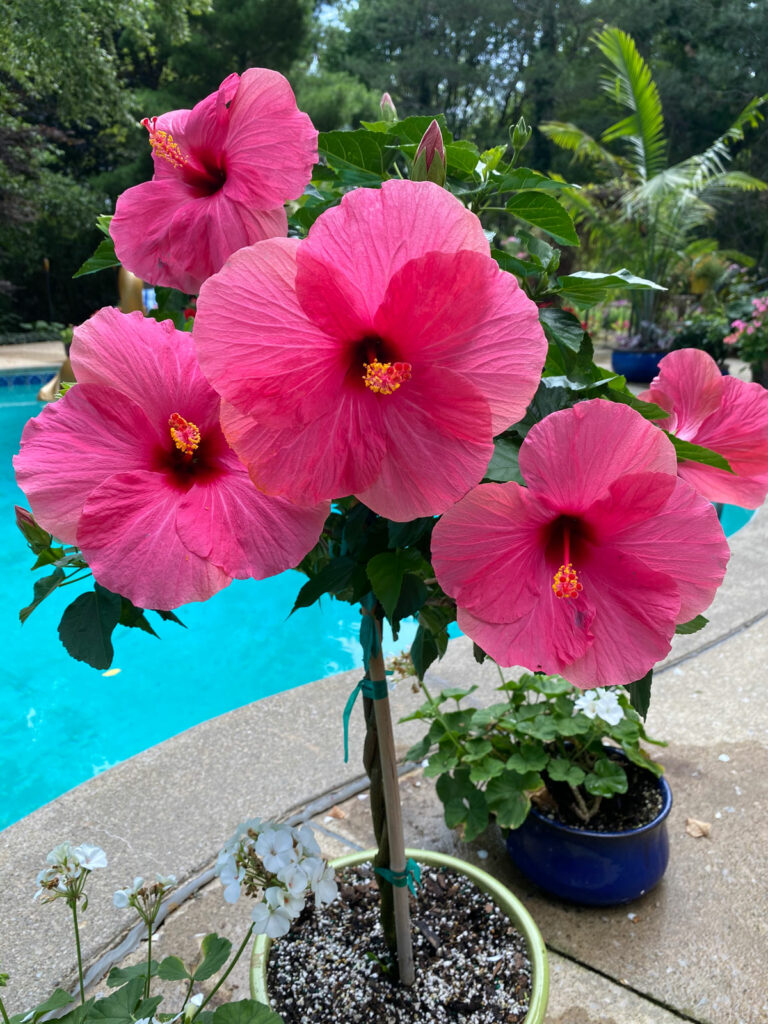The hibiscus flower is one of the most recognizable blooms in the world. With its vibrant colors and tropical feel, the hibiscus has come to symbolize everything from hospitality to power. But where does this flower get its many meanings from? Read on to learn about the rich history and symbolism behind the iconic hibiscus.

The Origins and History of Hibiscus Flowers
- Native to warm climates like Hawaii, the hibiscus flower can now be found around the world. But it still retains its tropical and exotic flair.
- Hibiscuses are part of the mallow family and can come in many colors like red, yellow, orange, purple, white and pink.
- There are hundreds of different hibiscus species and hybrids. The most popular is the Chinese hibiscus or Hibiscus rosa-sinensis.
- Hibiscuses have been an important plant to many cultures over the centuries. Their uses can be traced back to Ancient Egypt, Africa, Polynesia, China and beyond.
- Hibiscus flowers and leaves have been used for food, medicine, clothing, decor and more by various civilizations.
The long history of hibiscus gives it a rich cultural significance that is still relevant today. It has accumulated many symbolic meanings which we recognize in the hibiscus flower of modern times.
Hibiscus Flower Meaning
Aloha and Hospitality
In Hawaiian culture, the concept of aloha and hospitality is deeply ingrained in their way of life. It is more than just a word or a greeting, it is a way of living that encompasses love, compassion, and kindness towards others. Aloha is often translated to mean “hello” or “goodbye” but its true meaning goes beyond mere salutations. It represents the values and attitudes that are essential to Hawaiian culture.
The hibiscus flower, also known as the “pua aloalo” in Hawaiian, plays a significant role in representing the spirit of aloha and hospitality. This beautiful and vibrant flower is commonly used in traditional Hawaiian practices and symbolism, especially in welcoming visitors to the islands. In fact, the hibiscus has been designated as the official state flower of Hawaii, further solidifying its importance in the culture.
One of the main reasons why the hibiscus is associated with hospitality in Hawaii is because of its representation of warmth and welcome. The bright and cheerful colors of the flower, along with its large size, make it a perfect symbol for creating a warm and inviting atmosphere. Hawaiians often wear hibiscus flowers in their hair or offer them to guests as a gesture of aloha. This act of giving and receiving flowers is seen as a way to express love, affection, and peace towards one another.

In addition to being a symbol of hospitality, the hibiscus is also closely tied to other traditional Hawaiian practices such as luaus, leis, and pineapple drinks. Luaus, which are traditional Hawaiian feasts, are often decorated with hibiscus flowers to create a festive and welcoming ambiance. Similarly, leis made from hibiscus flowers are commonly given as gifts to visitors as a way of showing appreciation and welcoming them to the island.
Moreover, the hibiscus is also associated with the concept of paradise in Hawaiian culture. Its bright and vibrant colors, along with its tropical origins, make it a perfect representation of the beautiful and idyllic landscape of Hawaii. This further reinforces the idea that the hibiscus flower embodies the spirit of aloha and hospitality.
The hibiscus flower holds a special place in Hawaiian culture as a symbol of aloha and hospitality. Its significance goes beyond its aesthetic appeal and is deeply rooted in the values and traditions of the people of Hawaii. As visitors to the islands, it is important to understand and appreciate the cultural significance of the hibiscus flower and its role in representing the warm and welcoming nature of the Hawaiian people.
Exotic Beauty
The hibiscus flower is well-known for its exotic and delicate appearance, making it a popular choice for many floral arrangements. Its beauty is not only appreciated for its visual appeal, but also for the symbol it holds for fertility and femininity.
The scientific name for hibiscus, “Hibiscus rosa-sinensis”, translates to “rose of China”. This name perfectly reflects the flower’s stunning beauty, as it is often compared to the beauty and grace of roses. With its intricate layers of petals and vibrant colors ranging from shades of red, pink, orange, yellow, and white, the hibiscus flower truly stands out and captures attention.
As an ornamental flower, hibiscuses are prized for their ability to bring instant tropical flair to any setting. They are commonly seen in gardens, parks, and even used in various decorations for special occasions. Their lush, vivid blooms make them visually striking and add a touch of vibrancy to any environment.
Apart from its aesthetic appeal, hibiscus flowers also hold a significant place in traditional medicine and herbal remedies. The flower has been used for centuries in various cultures to aid in digestion, reduce inflammation, and boost the immune system. In some cultures, the hibiscus flower is also believed to have aphrodisiac properties, further emphasizing its link to fertility and femininity.

In recent times, hibiscus flowers have also gained popularity in the beauty industry. They are sometimes incorporated into beauty treatments like bath teas and hair rinses in spas. These treatments harness the soothing and nourishing properties of the flower, leaving the skin and hair feeling refreshed and rejuvenated.
Furthermore, hibiscus extract is also used in skincare products due to its high content of antioxidants and natural acids that can help improve skin texture and reduce signs of aging. The flower’s anti-inflammatory properties also make it an excellent ingredient in products targeted towards sensitive or irritated skin.
The hibiscus flower is not only a symbol of beauty and fertility but also holds significant cultural and medicinal importance. Its exotic and delicate appearance, coupled with its potential health benefits, makes it a truly unique and special flower. So next time you come across a hibiscus plant or product, take a moment to appreciate its exquisite beauty and all that it represents.
Femininity and Delicacy
Femininity and delicacy are two qualities that are often associated with the hibiscus flower. The hibiscus is a beautiful and vibrant flower that comes in various colors, shapes, and sizes. Its large yet short-lived blooms exude a sense of femininity and fragility, making it a popular symbol of beauty and elegance.
In many cultures around the world, the hibiscus flower holds great significance in representing female beauty, fertility, and sexuality. In some ancient civilizations, such as Egypt and China, the hibiscus was used in traditional medicine to enhance women’s beauty and treat various gynecological issues. This association with female fertility and beauty has carried on through generations, making the hibiscus a staple in many cultural rituals and ceremonies.
In Tahiti, the hibiscus flower is seen as a symbol of female availability and attractiveness. Single women wear the flower behind their right ear as a way to indicate their relationship status and attract potential suitors. The placement of the flower also has a special meaning; if the flower is worn behind the left ear, it signifies that the woman is taken or unavailable.

Aside from its connection to femininity and beauty, the hibiscus flower also has strong ties to Buddhist mythology. According to legend, the first hibiscus flower bloomed when Maitreya, a female Buddha, smiled. This myth further solidifies the delicate and gentle nature of the hibiscus, as well as its deep associations with the female form.
In Hinduism, the hibiscus flower is sometimes considered a sacred flower that represents the goddess Kali. Kali is a fierce and powerful deity, often depicted with multiple arms and a garland of hibiscus flowers around her neck. This representation of Kali with hibiscus flowers symbolizes her strength and femininity, showcasing the duality of being a woman – soft and delicate, yet powerful and fierce.
The hibiscus flower has long been associated with femininity and delicacy in various cultures and religions. Its beauty and ephemeral nature have captured the hearts and minds of people throughout history, making it a popular symbol of female beauty, fertility, and sexuality. Whether worn behind the ear or used in religious rituals, the hibiscus continues to be a powerful representation of femininity and delicacy in today’s society.
Transience and Life’s Fragility
The hibiscus flower, with its vibrant colors and delicate petals, is a symbol of beauty and charm. However, this natural wonder also holds a deeper significance that has been recognized by different cultures throughout history. It has been said that the hibiscus flower lasts only a day in tropical climates, before withering away and falling off the plant. This transience of the hibiscus flower has been used as a metaphor for life’s fragility, representing the fleeting nature of our existence.
In Buddhist teachings, the short lifespan of the hibiscus flower is often used to illustrate the impermanence of life. The flower’s swift bloom and decay serve as a reminder that nothing in this world is permanent – not even life itself. This concept of impermanence is a core belief in Buddhism and is often used as a means to help individuals let go of attachments and find inner peace.
Similarly, ancient Egyptian burials sometimes included hibiscus flowers as symbols of transience and the fragile nature of life. They believed that these flowers served as reminders that life on earth is limited and that we should cherish every moment while we can.

In Polynesian culture, hibiscus flowers are thought to lose their petals at nightfall when ghosts rise. This is a symbolic representation of the soul leaving the body at death. The hibiscus flower serves as a powerful symbol of the transition from life to death, reminding us that our time on earth is temporary and that we must make the most of it while we can.
Overall, the transience of hibiscus flowers and their symbolic associations with life’s fragility highlight the idea that life is fleeting and unpredictable. We often get caught up in the hustle and bustle of daily life, forgetting to appreciate the present moment and the beauty that surrounds us. The hibiscus flower, with its short-lived but breathtaking beauty, serves as a powerful reminder to slow down and cherish every moment we have. It reminds us to find joy in the present and not take anything for granted, for life is indeed fragile and can be gone in the blink of an eye.
The hibiscus flower’s transience and its connection to life’s fragility hold universal significance and have been recognized by different cultures across the world. It serves as a poignant reminder to live in the present and appreciate the temporary nature of our existence. So the next time you see a hibiscus flower bloom, take a moment to admire its beauty and reflect on the deeper meanings it holds.
Modern and Cultural Symbolism
In modern times, the hibiscus flower retains its rich symbolic meanings while taking on some new connotations as well.
Celestial Bodies
- Some cultures associated hibiscus flowers with celestial bodies due to their radiant colors and short lifespans.
- In Polynesia, red hibiscuses represented the setting sun. Yellow ones symbolized sunrise.
- In China, the hibiscus was known as the “solar flower” and thought to vanish at night like the sun.
Political Symbols
- The hibiscus is a national symbol in several countries like Haiti, Malaysia and South Korea. It appears on flags, coins and emblems.
- These countries value the hibiscus for its ties to national culture as well as its symbolic meanings.
- For example, red hibiscus flowers represent the sacrifice of Korean independence fighters.
Relaxation and Leisure
- Today, hibiscus flowers evoke feelings of relaxation and leisure. We associate hibiscuses with tropical getaways and drinks.
- Brands like Hawaiian Tropic use hibiscus designs to conjure up thoughts of summer, beaches and fun.
- Hibiscus herbal teas and cocktails containing hibiscus let us mentally and physically relax and unwind.
No matter its context, the hibiscus remains full of symbolism and tradition. It has been a meaningful plant throughout history, making its way into many cultures before becoming popular worldwide. The meanings behind the lovely hibiscus continue to intrigue us today.
Conclusion
With its long history and diverse symbolism, the hibiscus flower has earned its status as an iconic bloom. Representing hospitality, female energy, the sun and stars, life’s fragility and much more, the vibrant hibiscus holds meaning across many cultures. Though often associated with its native tropical climates, this bright flower can add symbolic depth to any occasion or location. By giving hibiscus flowers or incorporating them into rituals, decor, crafts and more, we can tap into this plant’s rich heritage no matter where we live. So let the hibiscus flower inspire you to find your own special ways to honor its lasting significance and beauty.

We’re Emma Carole Paradis and Kimberly Carole, the owners and designers of Impeccable Nest, based in Bedford, New Hampshire. A mother-daughter team with a love of design. Originally from Manhattan Beach, California, now based in Bedford, New Hampshire, we bring a Southern California cool and New England tradition to our design. Not only do we work together…we also live together in a multi-generational home…and a home that they are known to design for others.
